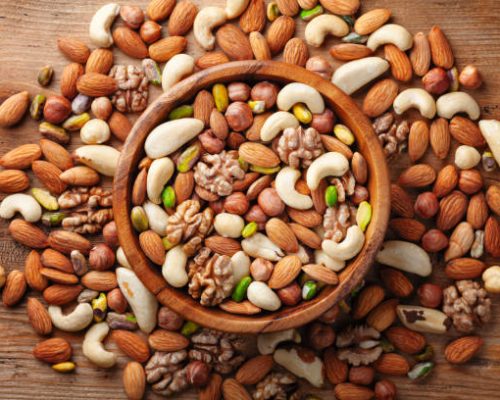Project Report For Dry Fruits Processing
Introduction
Project report for Dry Fruits Processing is as follows.
The procedures and techniques used to preserve and extend the shelf life of fruits by eliminating their water content are referred to as dry fruit processing. This method comprises drying the fruits using various methods such as sun drying, dehydration, or mechanical drying to decrease moisture content and produce dry fruits with a longer storage life.
The selection and harvesting of ripe and high-quality fruits is the initial stage in dry fruit processing. The fruits are then washed and cleaned properly to remove any dirt or pollutants. Before drying, depending on the type of fruit, it may be peeled, pitted, or sliced.
The use of the sun is one of the oldest and most traditional techniques of drying fruits. The fruits are spread out on trays or mats and set in the sun for many days until the required moisture level is reached. This procedure needs adequate sunshine, sufficient ventilation, and pest and bug control. Another typical method for drying fruits is dehydration.
It entails utilising heat and wind to remove moisture from the fruits. Dehydrators or ovens with regulated temperature and humidity are widely employed for this purpose. The fruits are evenly spread on trays and cooked at a low temperature for a set amount of time, which varies based on the variety of fruit and desired level of dryness.
Commercial dry fruit processing also use mechanical drying processes such as freeze drying and vacuum drying. Freeze drying involves freezing the fruits and then vacuuming them, causing the frozen water to evaporate instantly without going through a liquid phase. Vacuum drying, on the other hand, entails putting the fruits in a vacuum chamber and removing the moisture with heat.
After drying, the fruits are cooled and processed to eliminate any leftover contaminants or broken parts. They may also go through extra processing stages to improve their colour, texture, or flavour, such as blanching or sulfuring. Finally, the dried fruits are wrapped in airtight containers or sealed bags to keep moisture out and the quality intact.

Market Potential Of Dry Fruit Processing
The size of the world market for dry fruits was USD 6.10 billion in 2020, and it is anticipated that it would increase from USD 6.28 billion in 2021 to USD 8.30 billion by 2028, with a CAGR of 4.1% during the forecast period (2021-2028).
The market for dry fruit processing is predicted to be considerable in 2023. Dried fruits have gained appeal as a nutritious snack with a longer shelf life, since there is a growing need for healthy and convenient food alternatives.
The growing consumer knowledge of the health advantages of dried fruits is one of the primary aspects driving market potential. Dried fruits are high in vitamins, minerals, fibre, and antioxidants, making them an appealing option for health-conscious people. They are also perceived as a natural, minimally processed alternative to sugary treats, which adds to their appeal.
The convenience element is critical in determining the commercial potential of dry fruit processing. When compared to fresh fruits, dried fruits are lighter, more portable, and have a longer shelf life. They are conveniently transportable as on-the-go snacks, may be included in lunchboxes, and can be utilised as components in a variety of cuisine preparations.
Dried fruits are a popular choice for busy people, students, travellers, and athletes due to their convenience. Dried fruits’ adaptability also helps to their market potential. They may be found in a variety of foods such as baked goods, trail mixes, cereals, granola bars, confectioneries, and desserts. Their capacity to improve the flavour, texture, and nutritional profile of various goods makes them desirable culinary additives.
Project Report Sample On Dry Fruits Processing
Need Help?
Create 100% Bankable Project Report
